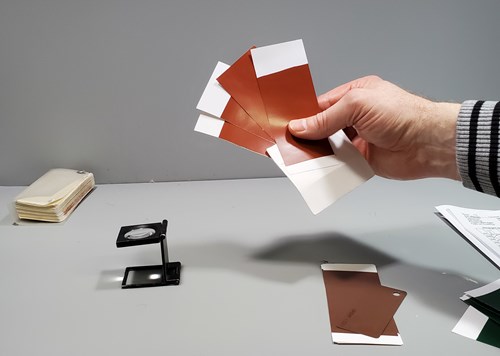The color wheel has been the basis of color theory since 1672. So today we figured we would pay a bit of respect to the wig wearing genius, who invented color theory as we know it today.

Sir Isaac Newton has quite the resume. In 1687 a wayward apple led him to an understanding of gravity. In 1672 he created one of the first reflecting telescopes, a design that is still used in astronomy today. He also developed the laws of motion, which continue to be the foundation of modern physics. Newton also contributed to the creation of calculus, for which many students across the world still despise him. However, it was an experiment that was considered more of a parlor trick at the time that gets the Thinking Color staff excited.
In the 1660’s it was widely believed that color was nothing more than a combination of light and dark, keep in mind that does not mean light and dark light just light and dark. Sir. Newton knew that this theory was as nonsensical as it sounds. Suspecting that light had something to do with color sometime around 1666 Newton set up a prism near a sun filled window. The results were spectacular. A 22-foot spectrum filled the wall opposite the prism representing each channel of visible light. What was quite possibly the world’s first documented man-made rainbow awed the witnesses gathered to watch the experiment. By refracting the light back together Newton proved it was not the prism but the light itself that was producing the color.

The full meaning of this experiment was slow to catch on. However, Newton found that many artists were extremely fascinated by this work, specifically the relation of the colors on the spectrum to one another. In order to help explain his findings to his less scientifically inclined artistic friends Newton turned the rectangular spectrum into a continuous wheel. This allowed for a simple visual demonstration of the spectrum and the relation of the colors to one another. Although he may not have realized it at the time Sir Isaac Newton had just invented the most important color tool in history.






